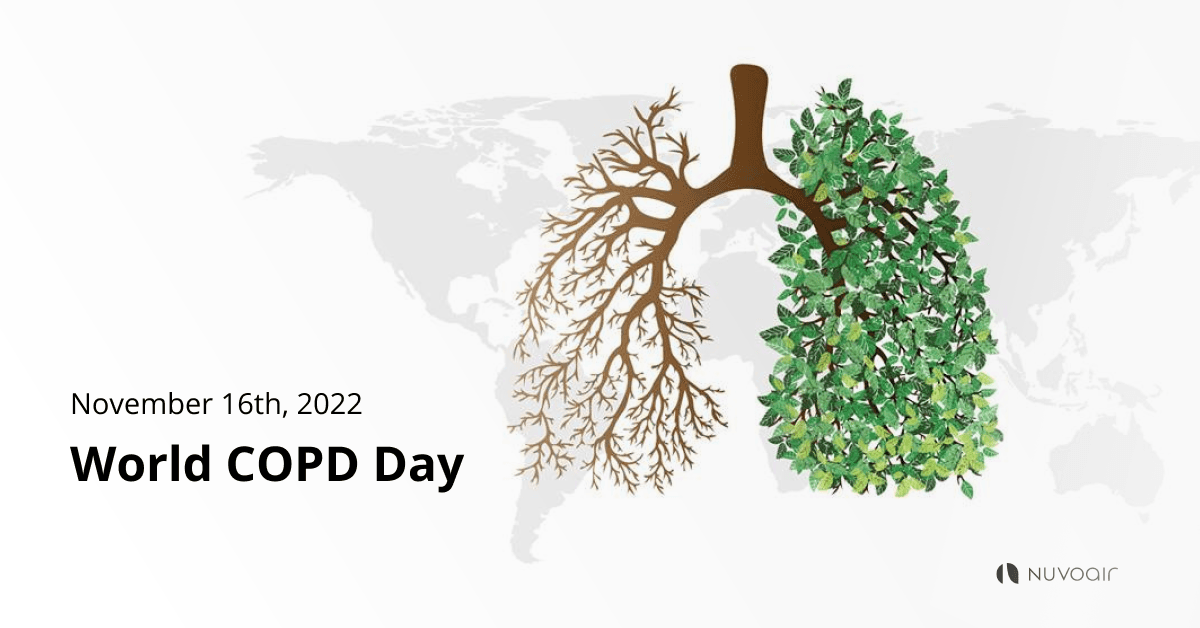World COPD Day: The Heart and Lung Connection


You likely know and love someone that is suffering from COPD, either diagnosed or undiagnosed. Today is World COPD Day, a call to action to reflect on the burden of COPD and advocate for more help for those suffering with the condition. COPD is quite common, with about 15 million Americans diagnosed and another 15 million who remain undiagnosed. Moreover, living with COPD can be extremely difficult. As the American Lung Association points out, when you can’t breathe, nothing else matters. People with COPD describe shortness of breath as “smothering” and “suffocating,” leading to high rates of depression, anxiety, and panic.
The average American lifespan has dropped almost three years from 2019 to 2021, the biggest drop in life expectancy in the US since the Great Depression, and while COVID-19 is a major cause, COPD is a significant driver of early death. We are also witnessing more disability than ever before and COPD is a large factor, causing life-limiting shortness of breath. Currently, COPD is the fifth leading cause of disease-related death, yet only one third of one percent of federal research dollars are spent on the condition.
When it comes to care, there is clear room for improvement. What many traditional programs fail to address is that, typically, COPD doesn’t exist in isolation. People with COPD commonly also suffer from other chronic conditions, including coronary artery disease, congestive heart failure (CHF), stroke, and lung cancer. Together with COPD, these make up the top five disease-related causes of death in the US. Combined, COPD and heart disease are particularly dangerous, as they commonly coexist and together they greatly increase the risk of hospitalization, death, and disability.
One out five people with heart failure also have COPD, one out of three people with COPD also have heart failure, and the risk of death and hospitalization increases more than 30% when both conditions are present. A person with only moderate COPD and moderate CHF is likely to have a severe clinical picture with a very high risk of hospitalization and death. Moderate COPD with up to 50% air flow reduction becomes severe and unmanageable when the heart’s ability to pump oxygenated blood is even mildly diminished: a clinical scenario where 2+2= 8.
Addressing the heart but not the lungs, or vice versa, leaves a person at high risk. Effective care for people with coexisting conditions requires coordinated, whole-person care that is personalized not only to each person’s conditions, but also their individual barriers to care. Yet treatment programs are often siloed, designed and delivered as if people suffered from only one condition. In addition, the standard approach fails to address individual needs and underlying social and behavioral determinants of health.
Cardiologists and CHF programs may address blood pressure, heart rate and fluid status, but won’t address the lungs. Pulmonologists and COPD management programs will focus on inhalers and spirometry, but won’t manage blood pressure and fluid status that are so important for heart failure. Neither is likely to address social needs like food and housing insecurity, unaffordable medications, lack of access to primary and specialty care, lack of transportation, low health literacy, and poverty, which are common barriers to managing illness. Joint management programs that coordinate heart and lung care and programs that provide whole-person care are extremely uncommon but extremely important.
I am deeply proud of the people at NuvoAir who are building a world class solution for people with COPD and related chronic conditions. Leveraging technology, including remote monitoring and a digital engagement platform delivered via personalized channels (phone, text, app, email), combined with relationship-based care from an interdisciplinary team comprised of care coordinators, respiratory therapists, nurses, pulmonologists and cardiologists, trained in motivational interviewing and anchored in an empathetic approach to care, allows for whole-person care to be delivered at scale. This World COPD Day, let’s collectively look to innovative approaches to better understand and care for people with COPD with their unique needs and challenges, so that they no longer suffer from early preventable exacerbations, outcomes and unneeded hospitalizations.
References
Ballreich JM, et al. Allocation of National Institutes of Health Funding by Disease Category in 2008 and 2019. JAMA Netw Open. 2021;4(1):e2034890. doi:10.1001/jamanetworkopen.2020.34890 Le, Tham T et al. Prevalence and Newly Diagnosed Rates of Multimorbidity in Older Medicare Beneficiaries with COPD. COPD vol. 18,5 (2021): 541-548. doi:10.1080/15412555.2021.1968815


